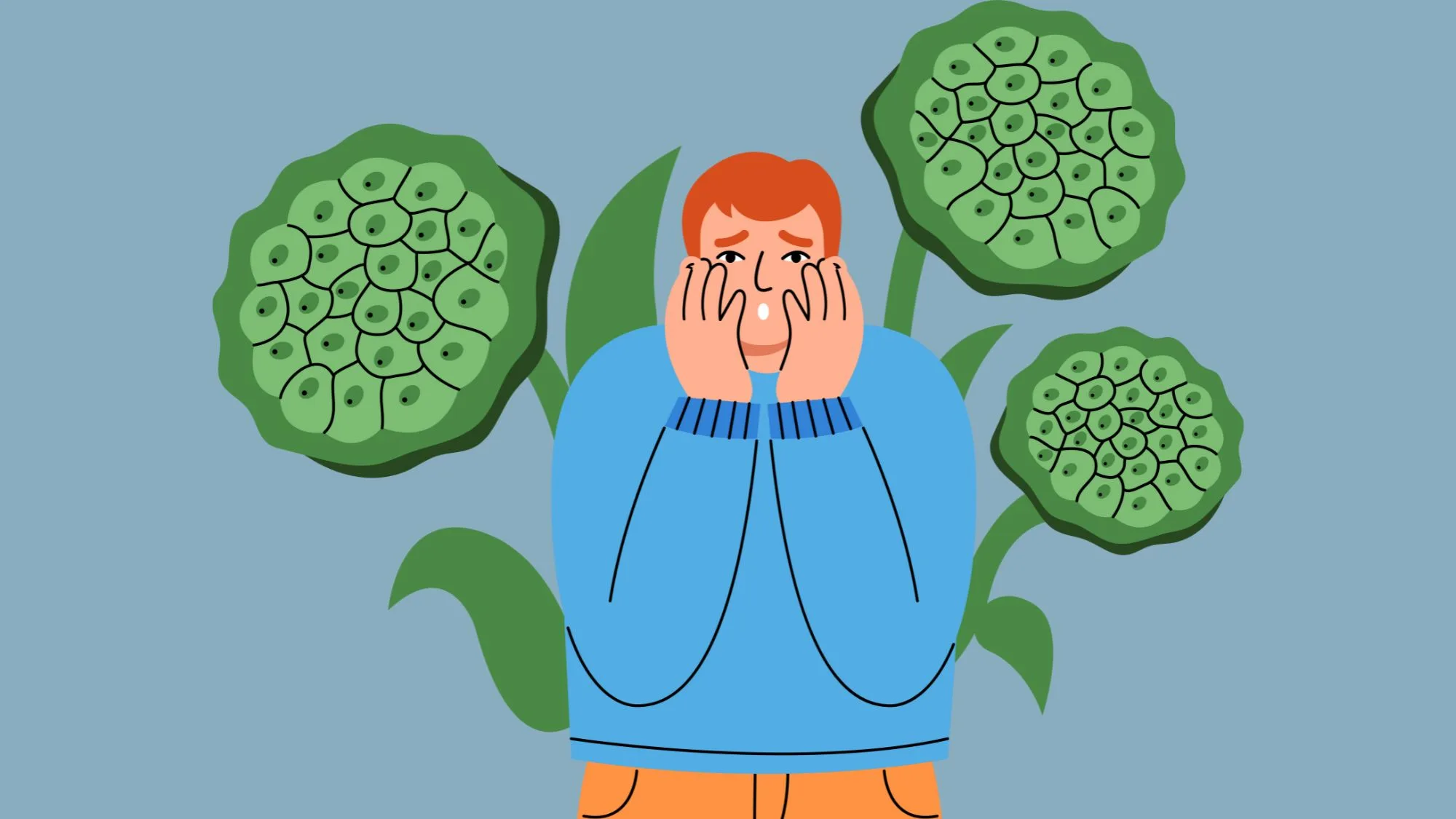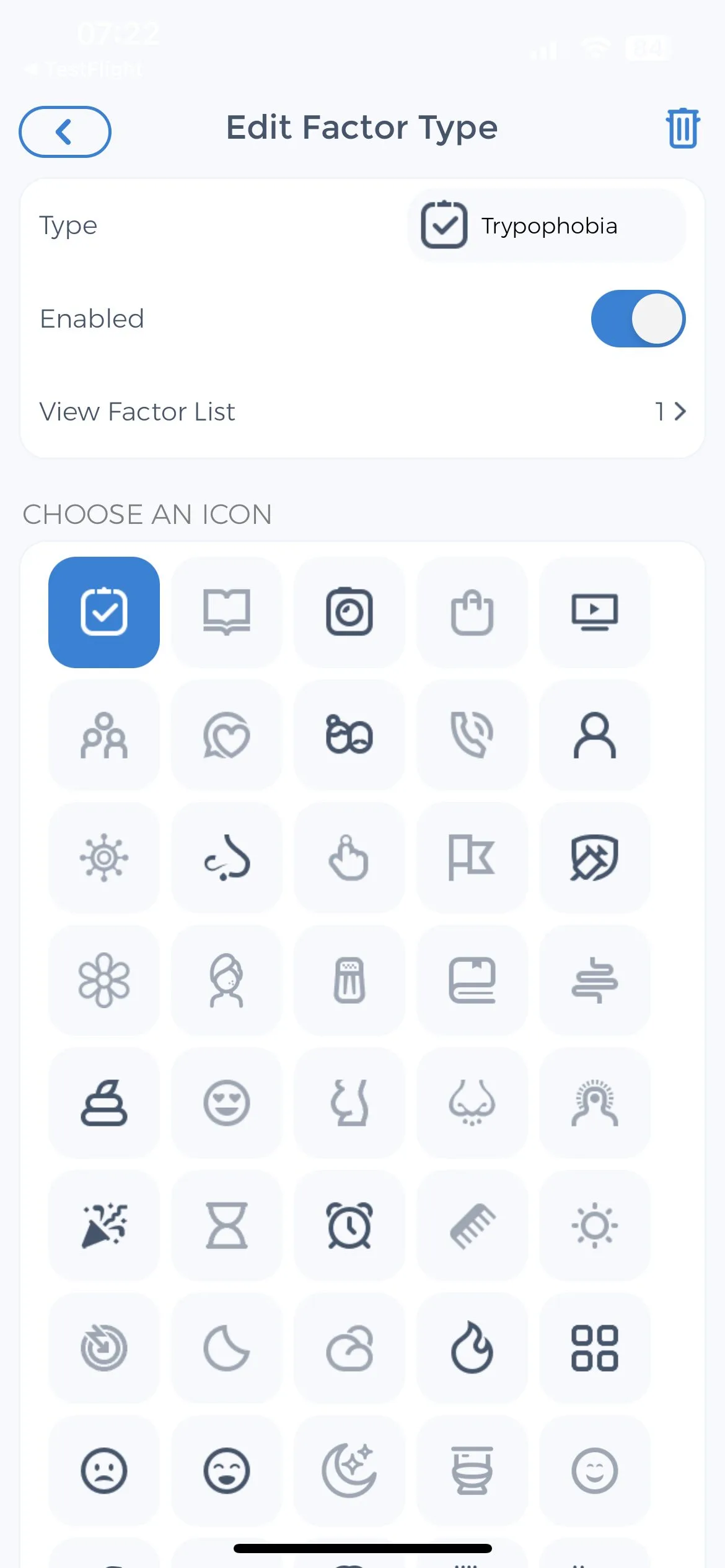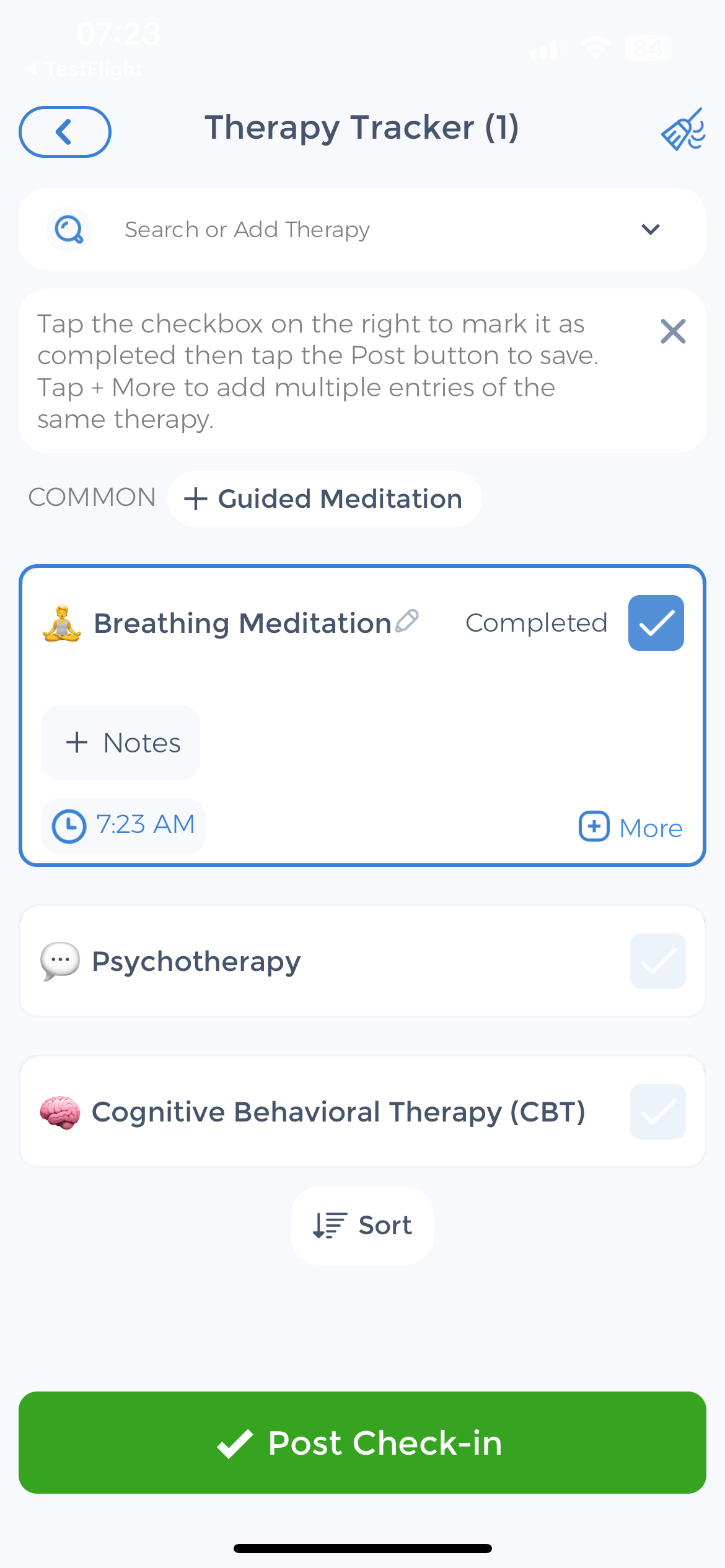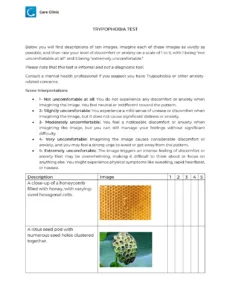
A comprehensive guide on trypophobia test. In this article, we will explore different aspects of trypophobia test, including its definition, symptoms, triggers and such patterns, the scientific understanding behind trypophobia triggers.
The purpose and procedure of the trypophobia test, coping strategies, and debunking myths surrounding this condition. Whether you suspect you have trypophobia or are simply curious to learn more, this article will equip you with valuable knowledge about trypophobia test images and mental health.[1]
Understanding Trypophobia
Trypophobia, often misunderstood as a simple fear of holes and such patterns, encompasses a complex array of reactions to clustered patterns of irregular scary figure of small holes or bumps. While not officially recognized as a distinct phobia in psychiatric diagnostic manuals, its prevalence and impact on individuals normal life cannot be dismissed.
Research suggests that trypophobia may stem from a combination of evolutionary predispositions, associative learning, and visual processing mechanisms. Leading to visceral reactions ranging from strong feelings of discomfort to anxiety or even panic attacks in susceptible individuals. Understanding trypophobia involves delving into its specific patterns on psychological, neurological, and evolutionary roots. Shedding light on how the brain processes visual stimuli and the intricate interplay between innate instincts and learned responses.
Definition and Symptoms
Trypophobia is an aversion or fear of clustered and irregular patterns of irregularly shaped small holes or bumps. These patterns may be found in natural objects such as honeycombs, lotus seed pods, or coral reefs, as well as in man-made objects like sponges, aerated chocolate, or porous materials. When confronted with these patterns, individuals may experience a range of symptoms that trigger trypophobia, including but not limited to:
- Feel disgusted or revulsion
- Intense anxiety
- Rapid heart rate
- Sweating
- Nausea or dizziness
- Goosebumps or chills and intense discomfort
If you experience these symptoms when exposed to hole patterns, it might be worth exploring whether you implicit trypophobia measure.
Common Triggers of Trypophobia
Triggers for trypophobia can vary from person to person. Commonly reported triggers include beehives, wasp nests, pumice stones, and even certain types of makeup or skincare products with textures resembling clustered holes. When exposed to these triggers, individuals with trypophobia may experience different reactions, ranging from mild discomfort to severe distress. Understanding your personal triggers and reactions can be helpful in managing your trypophobia.
While the symptoms and triggers of trypophobia can be distressing, it is important to note that the exact cause of this condition is still not fully understood. Some researchers suggest that trypophobia may be linked to a primitive survival response, similar to the fear of snakes or spiders. The theory proposes that our brains may have developed an aversion to hole patterns as a way to protect us from potential dangers, such as venomous creatures hiding in crevices.
However, it is worth mentioning that not everyone experiences trypophobia in the same way. Some individuals may only feel a mild discomfort when exposed to hole patterns. While others with same condition may have a more severe reaction. The intensity of the fear can also vary depending on the specific pattern or object triggering the phobia.
Common Reactions of Trypophobia
For those seeking to manage their trypophobia, there are various coping strategies that can be helpful. These may include gradual exposure therapy, where individuals gradually expose themselves to hole patterns in a controlled and safe environment, allowing them to build resilience and reduce their fear response over time. Additionally, relaxation techniques such as self awareness, deep breathing exercises or mindfulness meditation can also be beneficial in reducing anxiety and promoting a sense of calm.
It is important to remember that trypophobia, like any other phobia, is a valid and real experience for those who have it. If you suspect you may have trypophobia and it is causing significant distress or interfering with your daily life, it is recommended to seek help from a mental health professional who can provide insight, guidance and support tailored to your specific needs.[2]
Here’s a Free Trypophobia Test PDF: Free Quiz
⬇️ Trypophobia Test PDFPrintable[3][4]
The Role of Mental Health Professional for Treating Mental Disorders
Psychological Perspectives
 Psychologists and researchers have proposed various theories to explain trypophobia. One psychological perspective suggests that trypophobia may be an evolutionary response rooted in the brain’s tendency to associate holes with danger or potential harm. This one theory posits that throughout human history, individuals who were more cautious and wary of hole trypophobic patterns were more likely to survive and pass on their genes. As a result, this fear of holes has become ingrained in our collective psyche, even though the actual danger associated with holes may be minimal in modern times.
Psychologists and researchers have proposed various theories to explain trypophobia. One psychological perspective suggests that trypophobia may be an evolutionary response rooted in the brain’s tendency to associate holes with danger or potential harm. This one theory posits that throughout human history, individuals who were more cautious and wary of hole trypophobic patterns were more likely to survive and pass on their genes. As a result, this fear of holes has become ingrained in our collective psyche, even though the actual danger associated with holes may be minimal in modern times.
Another theory suggests that trypophobia may stem from an interaction between genetic predispositions and learned associations. Some individuals may have a genetic predisposition that makes them more susceptible to developing trypophobia. However, it is believed that environmental factors also play a significant role.
For example, if a person with a genetic predisposition to trypophobia has a negative experience involving hole patterns, such as witnessing a loved one being harmed by a swarm of bees emerging from a beehive, it could reinforce their fear and make it more pronounced.
Although more research is needed to fully understand the psychological underpinnings, these perspectives shed light on why some individuals develop trypophobia. By exploring the evolutionary and learned aspects of this fear, psychologists hope to develop effective treatments and interventions for those who suffer from trypophobia.
Biological Explanations
Biological explanations for trypophobia focus on the brain’s response to hole patterns. Neuroimaging studies have shown that when individuals with trypophobia are exposed to triggering stimuli, certain areas of their brain associated with fear and disgust processing show increased activity. This heightened brain activity suggests that trypophobia might have a biological basis, potentially involving the brain’s visual processing mechanisms.
Further research has revealed that individuals with trypophobia may have an exaggerated response to visual stimuli that contain clusters of holes. The brain’s visual processing centers, such as the occipital lobe and the fusiform face area, may become hyperactive when processing these hole patterns. That may lead to feelings of fear and disgust. This heightened neural response could explain why individuals with trypophobia find hole patterns so aversive, even though they may appear harmless to others.
Additionally, studies have found that individuals with trypophobia may have a stronger startle reflex when exposed to hole patterns. This suggests that their fear response is not only limited to a cognitive level but also manifests in physiological reactions. The combination of heightened brain activity and a heightened startle reflex may contribute to the intense and often irrational fear experienced by those with trypophobia.
By unraveling the biological mechanisms underlying trypophobia, researchers hope to develop targeted talk therapy that can help individuals overcome their fear and improve their quality of life.
Purpose of Trypophobia Test
The trypophobia test, while not a diagnostic tool, can help you assess the extent of your aversion to hole patterns. The purpose of the test is to provide a standardized framework for self-evaluation. To perform the test:
- Find a quiet and calm environment where you feel comfortable.
- Gradually expose yourself to various images or objects with hole patterns.
- Observe and note any emotional or physical reactions you experience.
By performing this test, you can gain insights into the intensity of your aversion and whether it aligns with the characteristics of trypophobia.
Now, let’s delve into the fascinating world of trypophobia and explore the reasons behind this unique aversion. The term “trypophobia” was coined in 2005 by internet users who shared a common fear of hole patterns. While it is not yet recognized as a formal phobia by the Diagnostic and Statistical Manual of Mental Disorders (DSM-5), it has gained significant attention in recent years.
Research suggests that trypophobia may be linked to a primitive survival instinct. Our brains are wired to detect and respond to potential threats in our environment, and hole patterns can trigger this response. The aversion to hole repetitive patterns may be rooted in our evolutionary past, where holes in the skin or body could indicate the presence of parasites or infectious diseases.
Interpreting Your Results
It’s important to note that the trypophobia test cannot provide a definitive diagnosis of trypophobia. However, interpreting your test results can help you better understand your reactions and determine whether seeking professional help is necessary. If your aversion to hole patterns significantly impacts your daily life or causes distress, it may be beneficial to consult with a mental health professionals who can provide guidance and support.
Remember, trypophobia is a complex and individual experience. Some individuals may only experience mild discomfort, while others may have more severe reactions. Understanding your own reactions can empower you to make informed decisions about managing your aversion and seeking appropriate support.[5][6][7]
Coping with Trypophobia: Therapeutic Approaches
Several therapeutic approaches can help individuals manage their trypophobia symptoms. Cognitive-behavioral therapy (CBT) is commonly used to help people challenge irrational beliefs and develop coping mechanisms to reduce anxiety.
Exposure therapy, a type of CBT, gradually exposes individuals to triggering stimuli with the goal of desensitizing their emotional response over time. Getting professional help from a mental health professional trained in trypophobia can guide you through these therapeutic approaches.
Other therapeutic approaches such as eye movement desensitization and reprocessing (EMDR) and acceptance and commitment therapy (ACT) have shown promise in helping individuals cope with trypophobia. EMDR involves using bilateral stimulation, such as eye movements or taps, to process distressing memories or triggers associated with trypophobia. ACT focuses on accepting uncomfortable thoughts and sensations while taking actions aligned with personal values.
Self-Help Strategies
 Self-care activities can also complement therapeutic approaches for trypophobia. Here are some self-help strategies you can try:
Self-care activities can also complement therapeutic approaches for trypophobia. Here are some self-help strategies you can try:
- Deep breathing exercises: Practice slow, deep breaths when encountering triggering stimuli to help calm your nervous system.
- Progressive muscle relaxation: Tense and relax different muscle groups to alleviate physical tension and reduce anxiety.
- Mindfulness meditation: Cultivate present-moment awareness to deflect attention from distressing sensations or thoughts.
- Positive affirmations: Use uplifting and reassuring statements to counter negative thoughts and emotions associated with trypophobia.
Lifestyle changes can also contribute to managing trypophobia symptoms. Regular exercise, a balanced diet, and sufficient sleep can help regulate stress levels and promote overall well-being. Engaging in activities that bring joy and relaxation, such as hobbies or spending time in nature, can also provide a much-needed respite from trypophobia-related distress.
Finding effective coping strategies may require experimentation and patience. What works for one person may not work for another, so explore different techniques to identify what resonates with you.
Debunking Trypophobia Myths: Common Misconceptions
Trypophobia, like many other conditions, is surrounded by misconceptions. It is crucial to debunk these myths to promote accurate understanding:
- Myth: Trypophobia is a recognized phobia in the Diagnostic and Statistical Manual of Mental Disorders (DSM).
Fact: Currently, trypophobia is not officially recognized as a separate phobia in the DSM. However, it is still a valid concern that can significantly impact individuals.
- Myth: Only a small number of people have moderate to severe trypophobia.
Fact: While prevalence rates vary, research suggests that trypophobia is more common than initially believed, affecting a significant portion of the population.
Facts vs Fiction
Understanding the facts about trypophobia can help dispel any misunderstandings:
- Fact: Trypophobia is not an accurate result of personal weakness or inadequacy. It is a legitimate condition that individuals experience differently.
- Fact: Seek professional help if trypophobia significantly interferes with your daily life or causes distressing psychological symptoms.
By debunking myths and focusing on accurate and valuable information, we can contribute to a more compassionate and informed perspective on trypophobia.
Trypophobia manifests differently from person to person. Some individuals may experience intense discomfort or disgust when exposed to patterned images or objects with clustered holes, such as honeycombs or lotus pods.
Others may experience physical symptoms like rapid heartbeat, sweating, or even panic attacks. Understanding the diverse range of responses to trypophobia can help us empathize with those who live with this condition.
It’s important to address the potential trypophobic reactions and trypophobic triggers. While hole similar patterns are the primary trigger for most individuals, other factors can contribute to the intensity of their reaction. These factors may include the size, density, or arrangement of clusters of small holes. By recognizing these triggers, individuals can better navigate their environment and take proactive steps to manage their trypophobia.
By shedding light on these additional aspects of trypophobia, we can gain a more comprehensive understanding and increased awareness of this complex condition. Seeking professional support and staying informed about the facts can enhance your understanding and well-being.
Download the CareClinic App to Track Trypophobia Symptoms
With the CareClinic App, you’re not alone in navigating your symptoms. Connect with a supportive community, set reminders for appointments and medication, and use the symptom tracker to observe trends over time. These tools are designed to support your unique path, providing clarity and control over your health journey. To take the first step towards a more empowered and informed self, Install App today and see the difference it can make.
Take Another Neurodivergent Test
Discover more assessment tests focusing on neurodivergent conditions. Access them by clicking here to view the complete set of tests.
References
- “Trypophobia is predicted by disgust sensitivity, empathic traits, and visual discomfort – PMC”. https://pmc.ncbi.nlm.nih.gov/articles/PMC5005243/
- “Trypophobia: What Is It, Triggers, Symptoms, Diagnosis & Treatment”. https://my.clevelandclinic.org/health/diseases/21834-trypophobia
- “Implicit Trypophobia Measure: Trypophobia Test”. https://openpsychometrics.org/tests/ITM/
- “Trypophobia Test – Deenz Trypophobia Scale”. https://drdeenz.com/trypophobia-test/
- “Fear of Holes May Stem From Evolutionary Survival Response – Association for Psychological Science – APS”. https://www.psychologicalscience.org/news/releases/fear-of-holes-may-stem-from-evolutionary-survival-response.html
- “Pupillometry reveals the physiological underpinnings of the aversion to holes – PMC”. https://pmc.ncbi.nlm.nih.gov/articles/PMC5756615/
- “Aversion to holes driven by disgust, not fear, study finds | ScienceDaily”. https://www.sciencedaily.com/releases/2018/01/180104131614.htm
- “Efficacy of eye movement desensitization and reprocessing in the treatment of specific phobias: Four single-case studies on dental phobia – PubMed”. https://pubmed.ncbi.nlm.nih.gov/12455017/
- “7 Steps to Overcome Your Fear of Holes (Trypophobia) – Fear – eNotAlone”. https://www.enotalone.com/article/mental-health/fear/7-steps-to-overcome-your-fear-of-holes-trypophobia-r13872/
- “Mindfulness and Trypophobia: Techniques for Finding Calm Amidst the Fear – Phobia Cures”. https://phobiacures.info/blog/mindfulness-and-trypophobia-techniques-for-finding-calm-amidst-the-fear/



